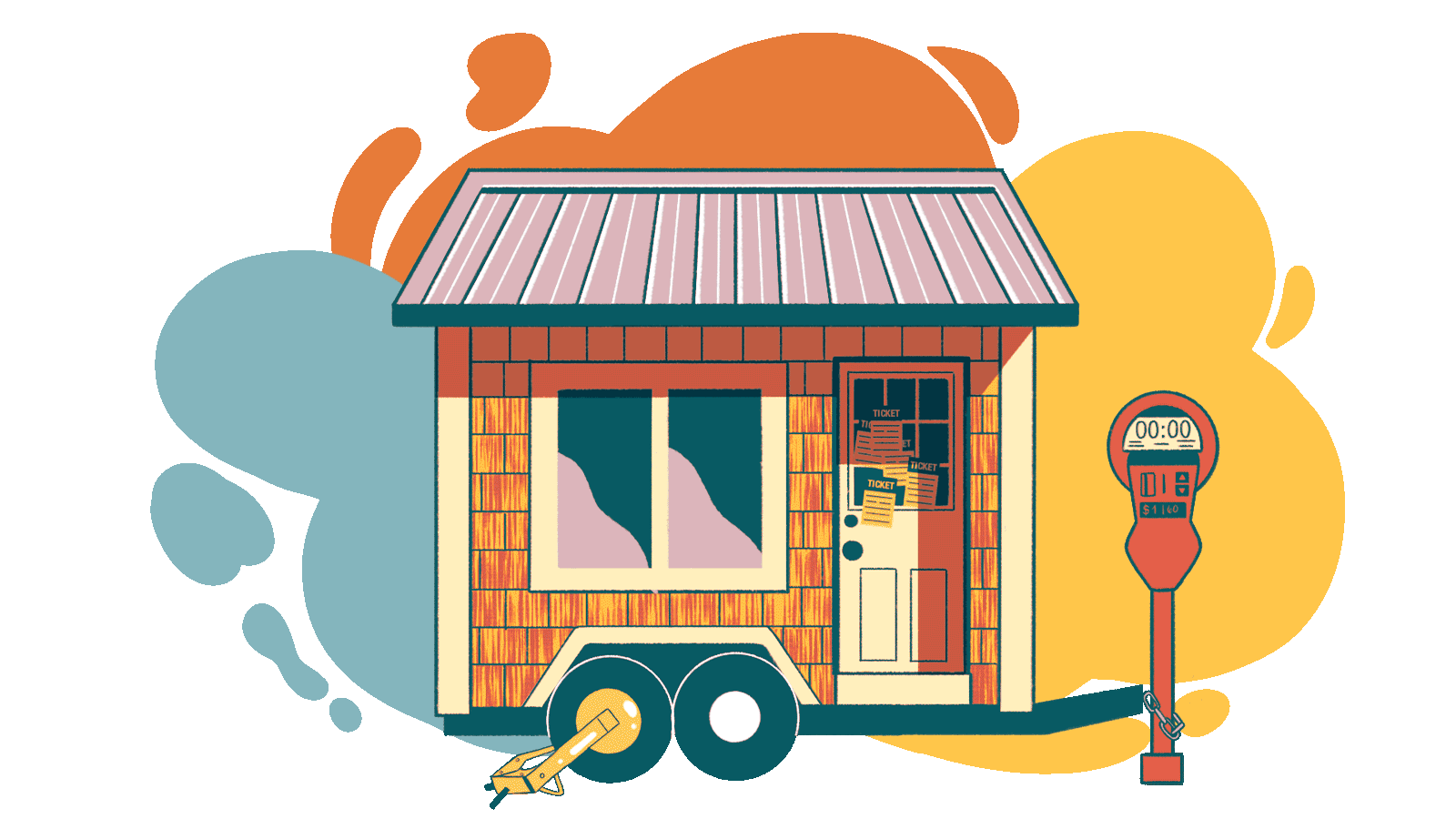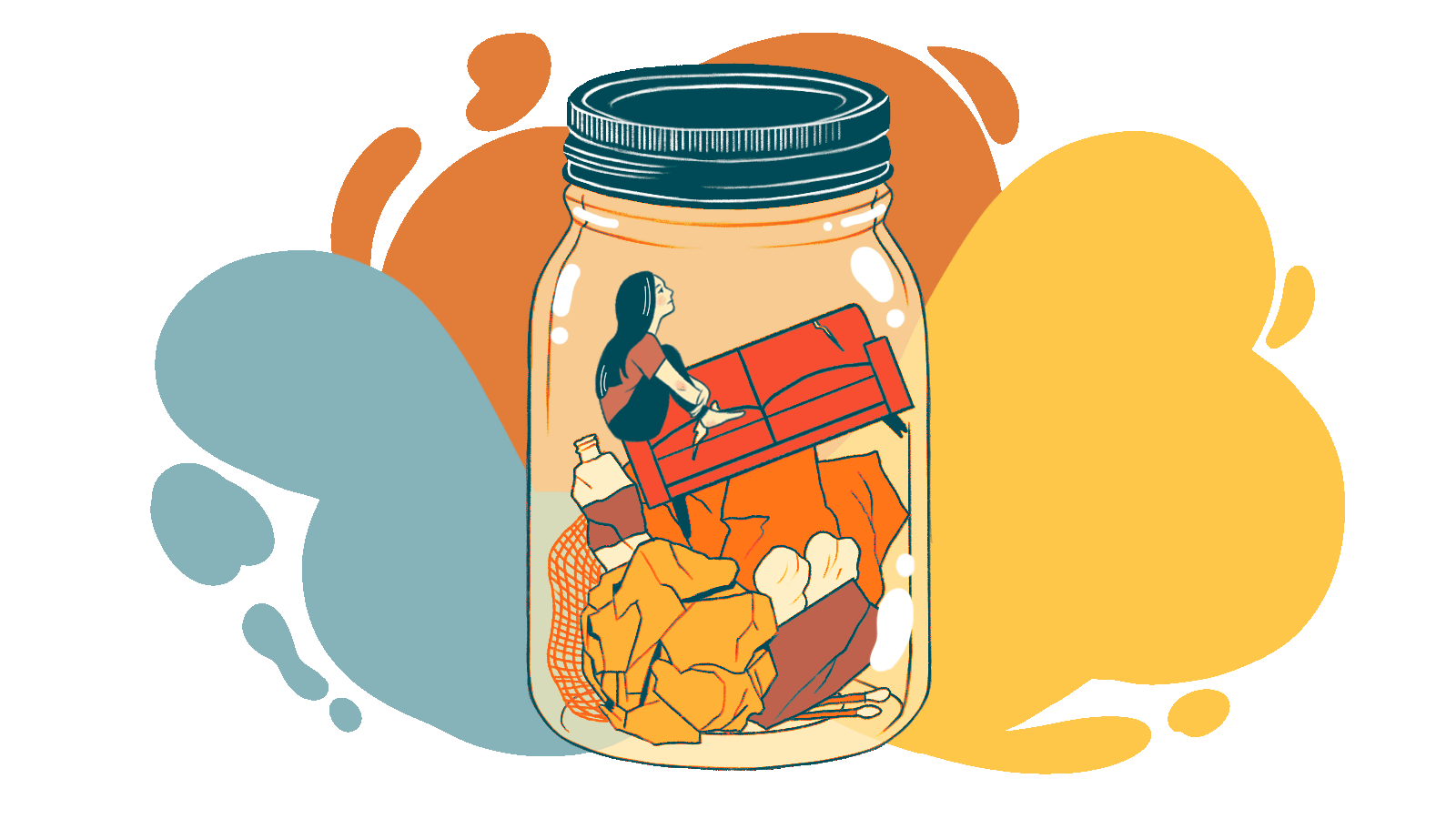This story is part of the Grist arts and culture series Remember When, a weeklong exploration of what happened to the climate solutions that once clogged our social feeds.
In 1997, Jay Shafer built his first tiny house: a miniature country chapel with tastefully weathered wood, a high-pitched roof, and tall, crimson-trimmed windows. The exercise was part design challenge, part architectural rebellion. Shafer’s abode measured roughly 12 feet tall and 8 feet wide, less than the minimum size requirements for a house dictated by most building codes.
“Once I learned it was illegal to live in a house that small, I decided I had to,” he said, “just to show that it was actually a safe and efficient and reasonable thing to do.”
But as Shafer would soon learn, tiny-home living appealed to more than those with a taste for civil disobedience. While most Americans were never going to move en masse into trailer-size homes, within certain environmental circles, it was fairly common to hear someone sigh into a Nalgene and declare, “I’d really like to live in a tiny house someday.” The idea particularly seemed to enchant people who idealized a low-footprint, quality-over-quantity style of life — one in which they could awaken in a loft bed, wrap themselves in linen, brew a French press in a compact yet exquisitely designed kitchen, emerge onto the tiny dew-covered porch, and sip thoughtfully as sunlight filtered through pine needles.
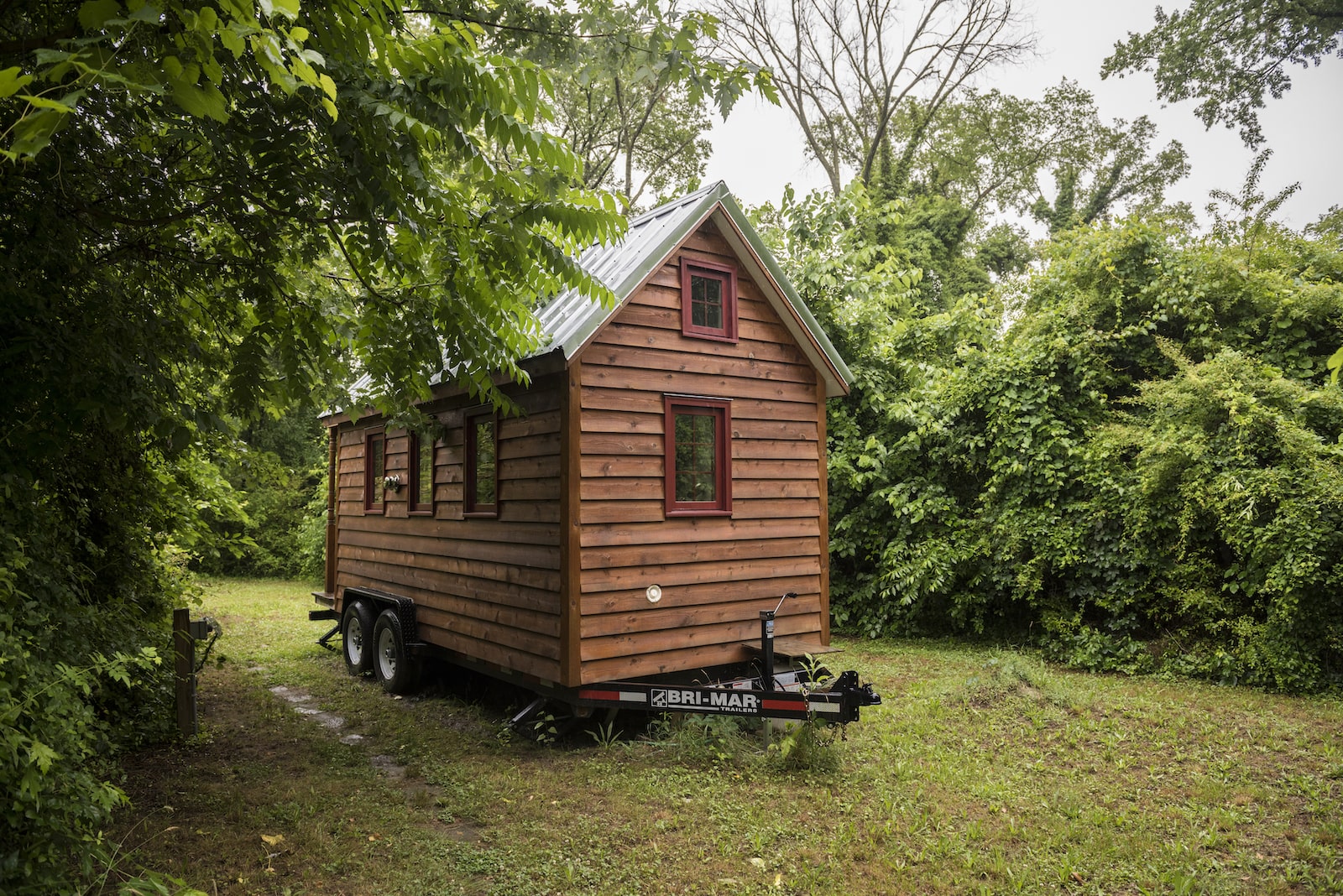
One of the very early tiny-house adopters, Shafer is sometimes credited with “inventing” the minicottage aesthetic that launched this fantasy. In 2000, he founded his own design and construction company, Tumbleweed Tiny Houses, and by the time he left the company 12 years later, the business had seen “exponential growth.” An entire ecosystem of tiny house blogs, books, reality series, and documentaries had cropped up extolling the virtues of living better by living with less.
But for all the hubbub, tiny houses never really entered the mainstream realm of homeownership. Instead, they entered the province of tourists seeking a brief decampment to a smaller-scale, climate-friendly lifestyle. You’re more likely to encounter one while scrolling through $300-a-night Airbnb listings than browsing Zillow.
This is not to say that the tiny-house movement failed. Rather, the expectations placed upon it were too high: that it could take on all the sins of a bloated, profit-driven housing industry, and deliver us as a nation to a humbler, happier way of living.
“The movement is still strong,” said Shafer. “It just seemed like a lot of parasites were attaching themselves to it. You have the movement, and then a lot of people that were trying to make money off it.”
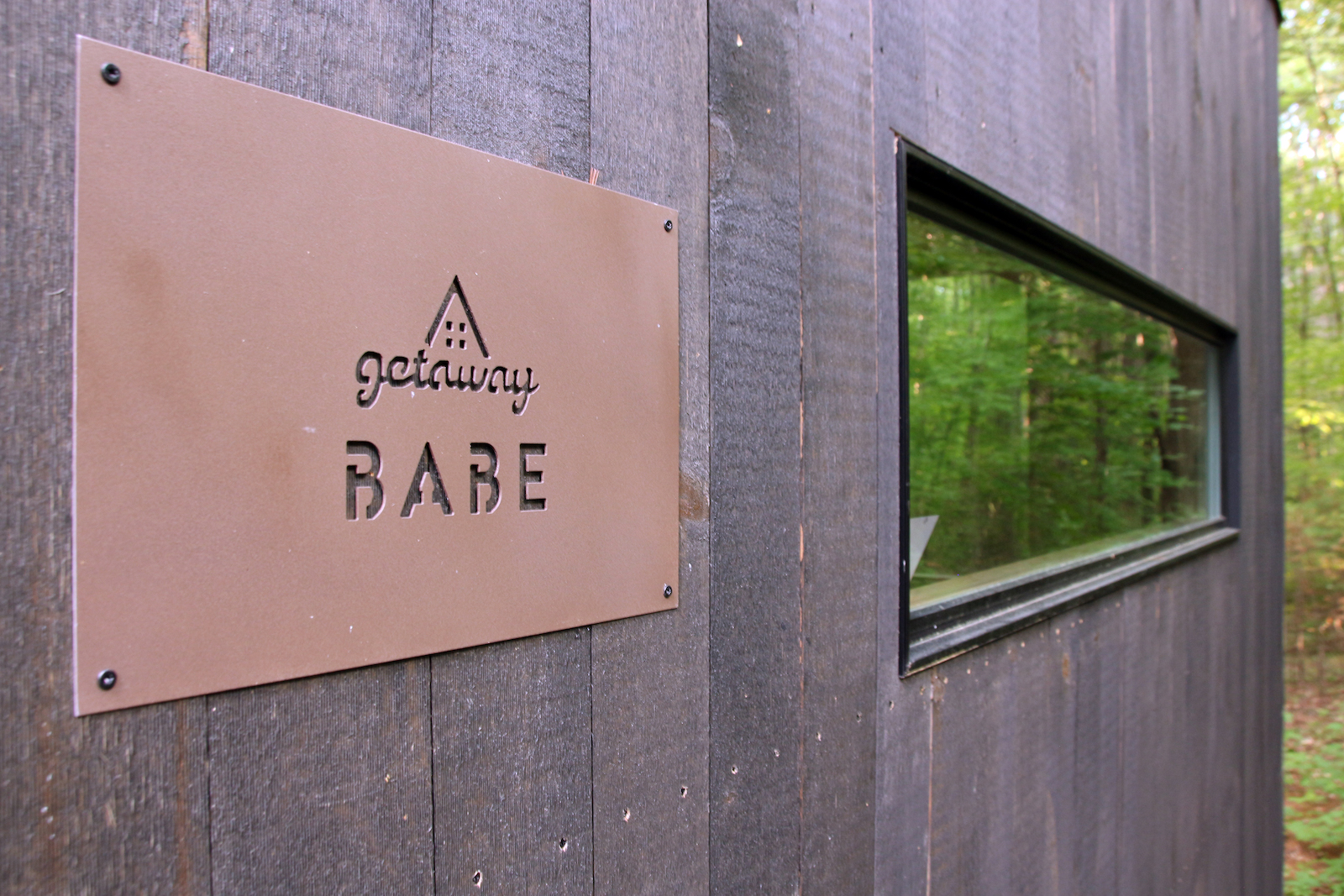
Shafer defines a tiny house as one in which “all the space was used efficiently and nothing was lacking.” A more technical definition is a structure taking up no more than 600 square feet, with permanent provisions for living, sleeping, eating, cooking, and sanitation, but those are relatively palatial parameters for the more hardcore tiny house devotees. They would argue that a true tiny house is 8.5 feet wide and able to fit on a wheeled base, like an RV chassis. The amenities of such structures can range enormously, from a barely glorified camp bedroom to a fully functioning home complete with hot water, a composting toilet, and a solar array.
A tiny home with all the trimmings might set you back $100,000 or so — not exactly a small investment. But shortly after the 2008 recession and housing market crash, tiny houses started to look appealing to a generation of young people disillusioned by their parents’ overblown, overmortgaged homes.
There is also, of course, an environmental appeal to a tiny house. The size of a house strongly correlates with the resources required to keep it powered, cooled, and heated. If your home is very, very small, your personal use of those resources will be quite minimal. (Granted, this is equally true for a Manhattan studio as it is for a tiny house, and a Manhattan studio will never need to be hauled using a 500-horsepower truck.) And extremely limited storage eliminates the opportunity for wasteful consumption of stuff, a significant American climate culprit.

In 2011, Christopher Smith, freshly out of college and starting to imagine the shape his adult life might take, bought a plot of land in “middle-of-nowhere” Colorado with the dream of building a small homestead on it with his own hands. The precipitous costs of meeting building code requirements quickly eroded that vision, and he began to lose faith in ever having enough money to have a home on that land.
By chance, Smith’s mother had recently sent him a copy of YES! Magazine, with tiny-house movement pioneer Dee Williams on the cover. After reading Williams’ profile, he realized that the wheeled design of the tiny-house base would remove the costly requirements of building a foundation structure that was up to code. “It made the whole project possible,” he said. “For me, the tiny house was a solution to a problem. But for a lot of people, I think it was more of a lifestyle choice — to simplify, downsize, control finances — a bit of a different motivation.”

Smith built the house with his then-partner, Merete Mueller, and the two filmed the whole process in a documentary, TINY: A Story About Living Small.
“After the film came out, the tiny-house movement kind of blew up,” he said. “I’m not saying it was entirely due to the film, but it had a fairly large impact on it, the fact it was on Netflix and Hulu and all that. We knew it was this idea that was coming at the right time, but the speed, the way it became this phenomenon, took us by surprise.”
Suddenly, tiny houses were popping up everywhere across the internet. You couldn’t shake a stick at your Facebook feed without hitting a shared photo of some wee storybook cottage tucked away in a forest grove. Mueller categorizes the phenomenon of the tiny-house social media craze under a very “millennial” way of posting — one that leans heavily on perfection and idealization, in contrast with Gen Z’s ostensibly more unfiltered approach.
“All of this coincided with this era of Instagram and social media and a time where the thing was more, ‘Look at these cute perfect houses!’” she said. “Even me and Christopher, the way we were posting and sharing about our experiences did definitely have this perfect, hashtaggy — now looking back on it — barf-inducing flavor.”
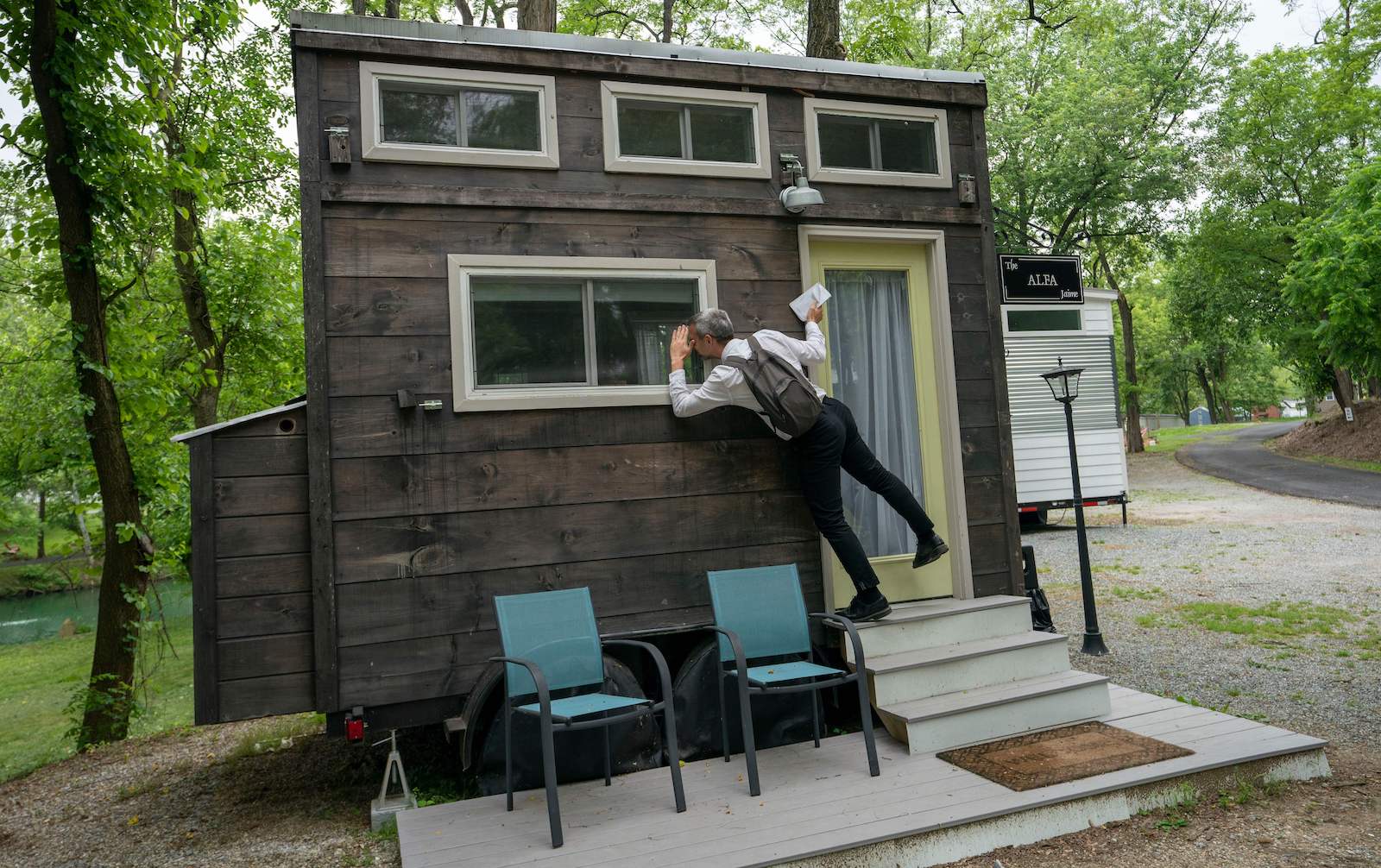
By 2014, the debut of the Netflix home improvement-style reality show Tiny House Nation had launched the movement fully into the mainstream. And that was around when, to hear Jay Shafer tell it, the good intentions of the tiny-house movement became overshadowed by consumer obsession. “The industry became a commercial thing,” he said. “It wasn’t so much about civil disobedience or about aesthetics so much as it was about selling houses.”
In 2005, when the sustainable-housing developer and writer Lloyd Alter first laid eyes on a sleek, solar- and wind-powered tiny house on wheels, designed by the architect Andy Thomson, he fell completely in love with it. It was a “gorgeous, modern design,” and he imagined toting it around the continent to park in beautiful scenic places and show at conventions. He happily paid $120,000 for it.
But what he quickly learned was that hauling the house was prodigiously expensive. One such journey from Toronto to Philadelphia cost around $4,000, and finding a place to park the damn thing for long periods of time was nearly impossible. If you don’t own land, it’s very challenging — especially in cities — to find a place to legally park a tiny house and connect it to utilities. Even if you do own land, you might be subject to all kinds of restrictions on the usage of your tiny house, due to aforementioned pesky minimum housing-size requirements.
“It just became a millstone,” Alter said. “I paid all this money, I couldn’t afford to take it to shows, it’s too expensive. And because it was small, people would say, ‘You want $450 per square foot for it? What are you smoking?’ And in a sense, they were right. You could get a house for much, much, much cheaper per square foot, and they did come with land! I finally sold it last year at an incredible loss, and sort of put it out of my mind as one of my bigger mistakes.”
In the United States, a person’s home is usually their most valuable financial asset. Traditional real estate tends to appreciate in value, which arguably rationalizes the massive upfront cost of buying a home. But tiny houses are different, particularly ones built on wheels, because they depreciate pretty quickly. That’s on top of an extremely high price per-square-foot, which is also hard to swallow for the standard American homebuyer.
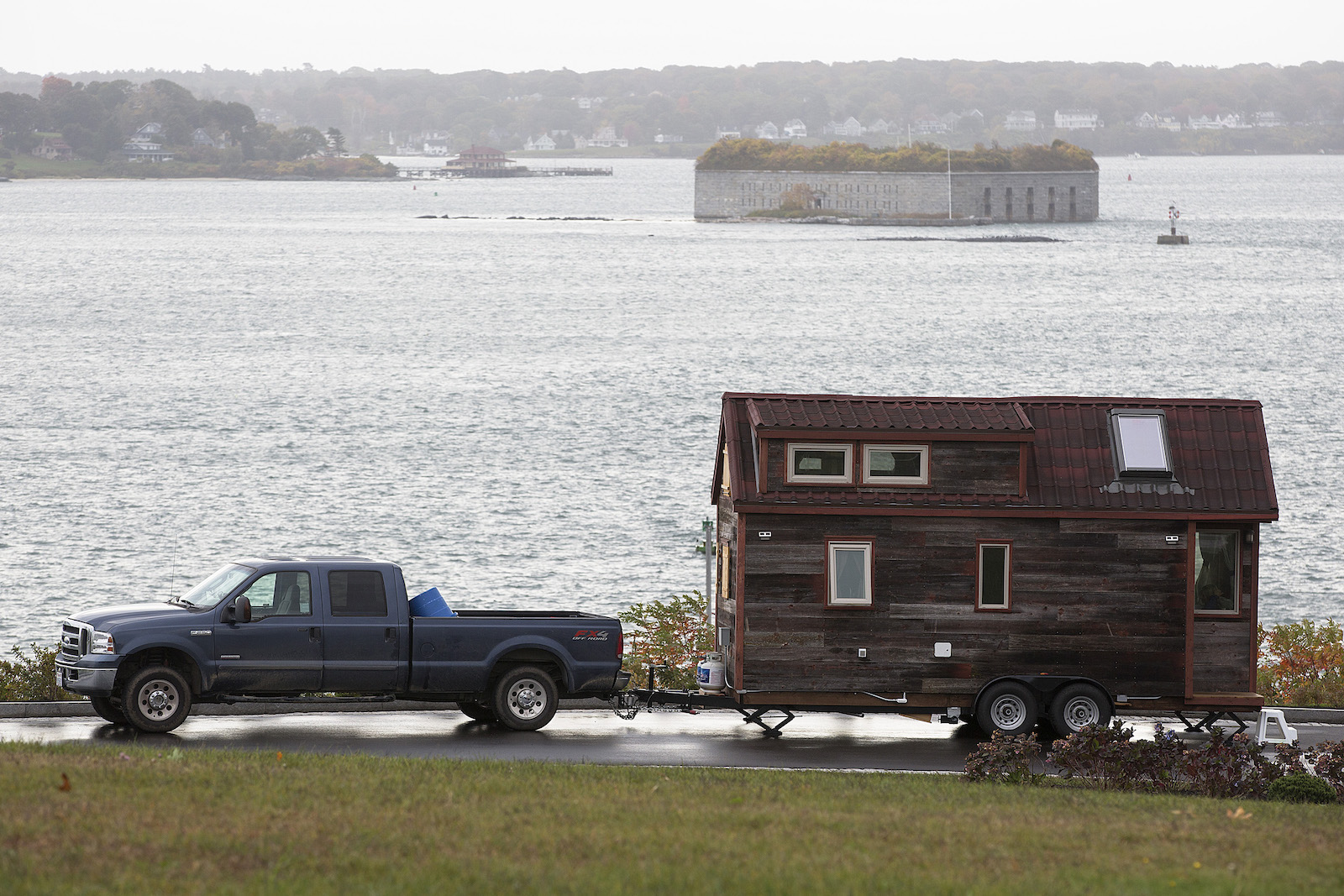
But the rise of Airbnb offered a “guaranteed business model” for people who wanted to make a tiny house into a legitimately profitable investment, said Zach Milburn, a real estate developer. That’s because short-term rentals will always net more money than month-to-month ones, according to an economic theory known as the “rent gap.” Several scholars have pointed to this phenomenon as a cause of gentrification driven by Airbnb, as homeowners convert what would otherwise be stable monthly housing into more profitable short-term rentals.
Tiny houses are tailor-made Airbnb bait, so to speak, and have become the highest-grossing “unique space type” on the platform, producing $195 million in revenue for hosts in 2021.
“There are three parts,” said Milburn. “They’re Instagrammable, and the cute-cozy aspect is attractive to people as well. And especially after the birth of these shows like Tiny House Nation, I think a lot of people want to try it out and are willing to pay a decent amount for a unique experience.”
Merete Mueller suggests that the proliferation of tiny houses as vacation retreats may have contributed to the fading of a cultural craze around them. “It used to be something that was an extreme enough lifestyle that it was more exciting to get a window into how someone did it, why they chose to go that route, and how it was panning out or impacting their daily life,” she said. “But when you could book one for the weekend and stay in it as a vacation house, it just became more and more normal. It became less exciting.”
Though tiny-house media coverage today is dominated by listicles of petite properties one can rent in any vacation destination under the sun, the idea that tiny houses could be harnessed for the greater good of society hasn’t gone away entirely. Cities like Seattle and Oakland have floated them as a stopgap measure for homelessness, to mixed degrees of success. The Accessory Dwelling Unit, or ADU, movement has fought for years and years to make tiny houses a viable solution to the affordable housing crisis. The idea is that if enough homeowners construct tiny houses in their backyards, it could increase supply in neighborhoods dominated by single-family homes. The concept is particularly appealing in increasingly expensive, lower-density cities like Portland, Seattle, and Los Angeles.
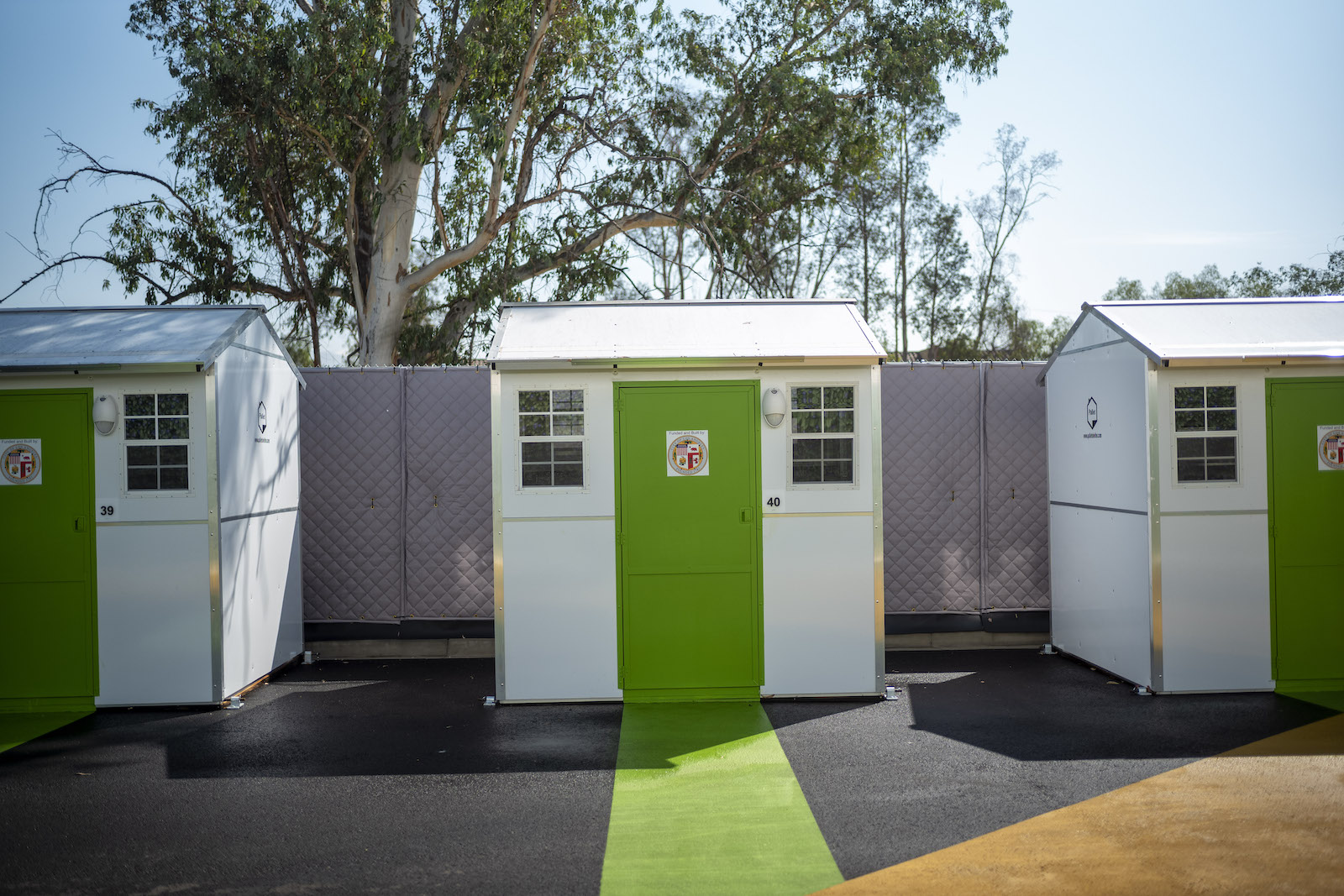
Smith, the TINY documentarian, said that he sees the clearest evidence of the effectiveness of the tiny-house movement in a quieter yet crucial realm: incorporation into municipal building codes.
At the beginning of the movement, “from a regulatory or legal perspective, it really felt like it could go either way,” he said. “Government could clamp down, or it would always be this gray area or this fringe thing. But it became bigger and people started fighting to get building codes for tiny houses, and it’s been embraced by the housing-first community and people working on homelessness. There’ve been a lot of people in the tiny-house world who really fought to legitimize tiny houses, and they’ve largely done that.”
Anything that becomes wildly popular eventually faces backlash. After all, you will bang your head on the ceiling that hovers four feet over the loft bed and crack the glass carafe of the French press on the corner of the countertop in the ridiculously small kitchen. Winter makes the beautiful tiny porch unusable for six months of the year.
As tiny houses surged in popularity, along came the contrarian blog posts: “The Tiny House Dream Is Actually A Nightmare,” “Are People Actually Happy in Tiny Houses?” and — a personal favorite — “Screw Your Tiny House and the Tiny Horse It Rode In On.” The tone implied that people who had fallen in love with tiny houses had been fooled by an unrealistic fantasy, and been forced to slink back to a mainstream, normal-size lifestyle.
“It kind of became political in a way that it wasn’t,” said TINY documentarian Smith. “When I started to learn about tiny houses, a lot of conservatives were in this movement, people who were looking at ways to be more self-sufficient and live a simpler life. I think what ended up happening was there was a group of people who started taking it as this liberal ploy to get everyone to cram themselves into tiny houses, saying that’s what the environmental movement wanted, and we saw a lot of those reactions to our movie.”
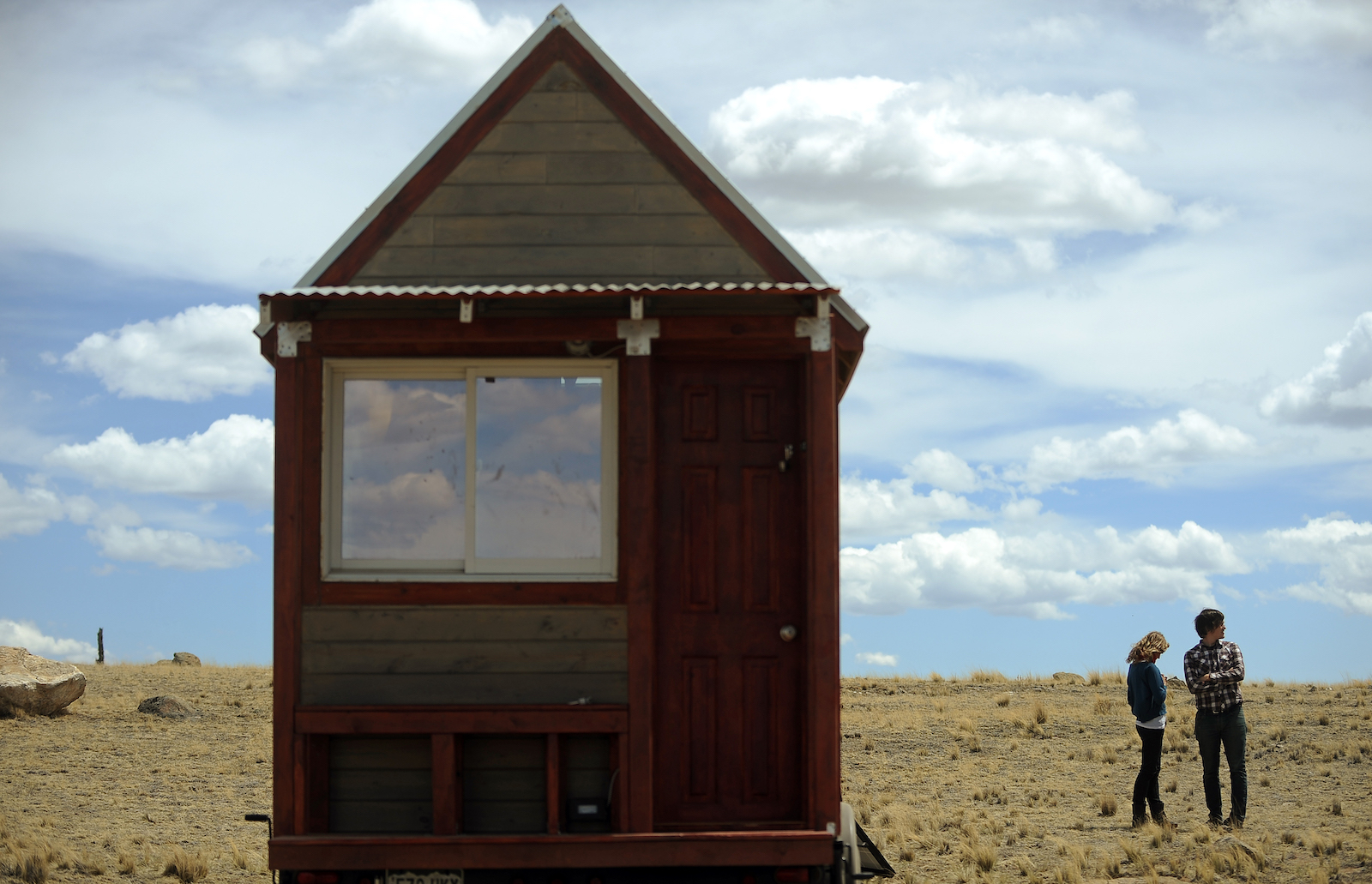
Mueller also attributes the backlash to the glowing, idealized nature of tiny-house media coverage in the first place. “Maybe if it had been framed in a more normal, realistic, middle-of-the-road way, it wouldn’t have had such a peak and decline,” she said. “I actually think that the most realistic representation of tiny houses is that it’s a thing that people do for a number of years to get to the next stage in their life.”
Mueller and Smith didn’t live in the tiny house they built together for more than a couple of months. They moved to New York for some time to work on their documentary, and eventually broke up. Smith moved to Los Angeles, intermittently transporting the tiny house around rural properties in Colorado and Montana. The cost and ordeal of moving it became too onerous, and he eventually sold it in 2020.
For her part, Mueller ended up staying in New York. “I was always excited about tiny houses as an ethos and a philosophy that could be applied to other square footages — it didn’t have to be the 120-square-foot house that fits on a flatbed,” she said. “Minimalism, experiences, and relationships over material possessions, those are still things I really stand by, and still kind of how I live my life. A New York City apartment is perfect for me.”

